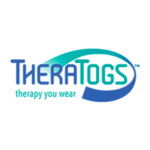5491123286958
011 5365- 8080
5491123286958
011 5365- 8080

Case Report: Effects of TheraTogs™ on the Postural Stability and Motor Control of a 7-year-old Girl with Down Syndrome and Severe Motor Delays
Phyllis A. Fenneman, PT, DPT1; Julie D. Ries, PT, PhD2 : 1- Department of Physical Therapy, Evansville Vanderburgh School Corporation, Evansville, IN 2- Department of Physical Therapy, Marymount University, Arlington, VA
Children with Down syndrome (DS) are frequently encountered in the public school environment and may be eligible for physical therapy services due to motor delays. The physical therapist’s task of serving the student with DS and severe motor delays can be challenging. This case report explores the use of a TheraTogs™ garment and strapping system as an intervention strategy to improve the postural stability and motor control of a 7-year-old girl with DS and severe motor delays. Down Syndrome • Incidence: 1 in every 733 live births • Common Characteristics: congenital heart defects, generalized hypotonia, ligamentous laxity, cognitive deficits, developmental delays • Research in motor development in children with DS demonstrates • Deficits in the postural control system • Definite trends in the rate of motor development with predicted probability that 100% of children with DS will be able to sit by 24 months, stand by 48 months, walk by 60 months, and crawl and roll by 72 months1 • Literature search reveals interventions used to improve postural stability in children with DS include ankle foot orthoses, neurodevelopmental treatment, and the use of somatosensory and visual information to reduce body sway. TheraTogs™: (Therapy You Wear™) An orthotics undergarment and strapping system made of a unique elasticized, latex-free, Velcro® sensitive fabric designed to improve body awareness, postural stability, and resting and functional joint alignment during therapy, as well as during performance of activities of daily living. • Lack of evidence in literature to support use to improve postural stability and motor control in children with DS • Selected as the trial intervention strategy to improve the postural stability and motor control in student with DS and severe motor delays due to system features • TheraTogs™ system offered the opportunity to incorporate joint proprioceptive input (individual sensory system) and constrain movement while improving biomechanical alignment (musculoskeletal components), both elements of systems influencing postural control.
Positive outcomes with measurable increases in postural stability and motor control were documented using the GMFM and the GAS. • Change analyzed from a systems approach: TheraTogs™ may have functioned as the control parameter that acted as the primary catalyst for K’s postural and motor changes. • Theratogs™ modified and manipulated components of the musculoskeletal and sensory systems to accomplish the following: corrected biomechanical alignment; increased proprioceptive input which improved K’s percept of correct spatial orientation and mapping; and increased her trunk stiffness, which improved her proximal stability and reduced the number of body segments K needed to coordinate when trying to balance and move. • More research needs to be performed that explores the use of TheraTogs™ to support the development of postural stability and motor control in children with DS and severe motor delays.
